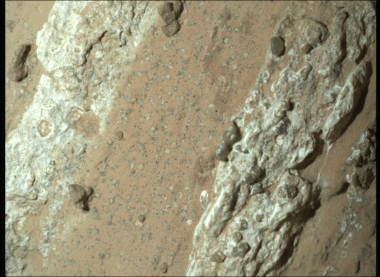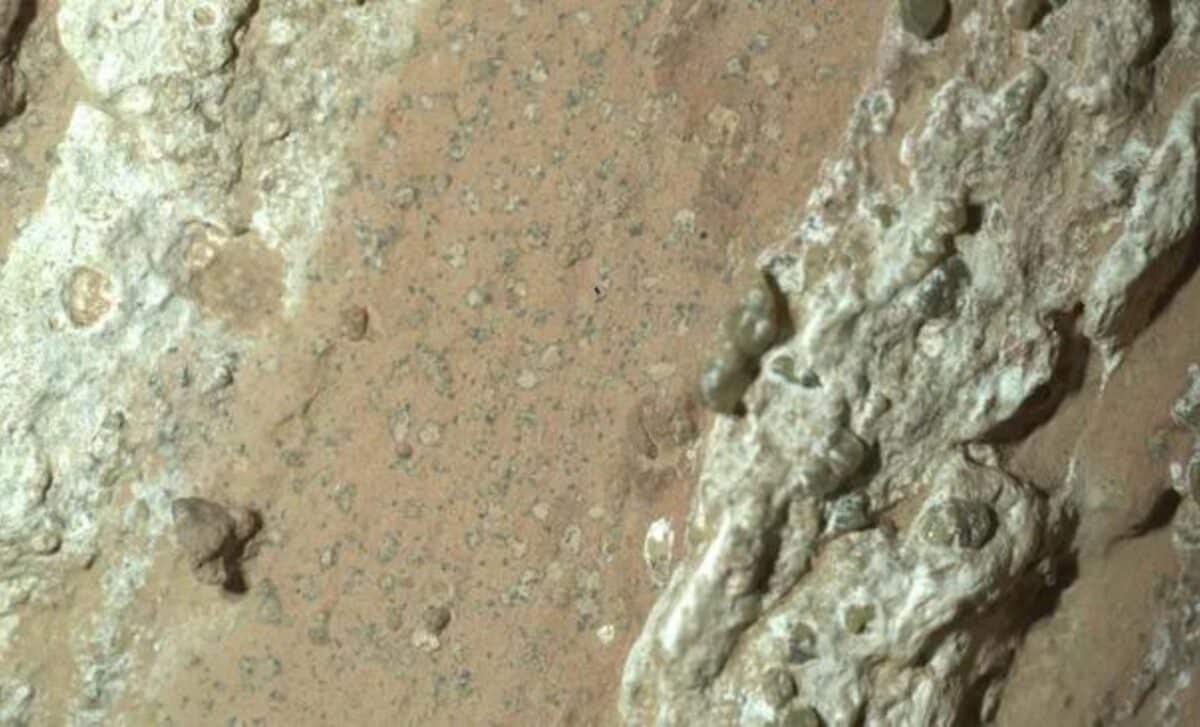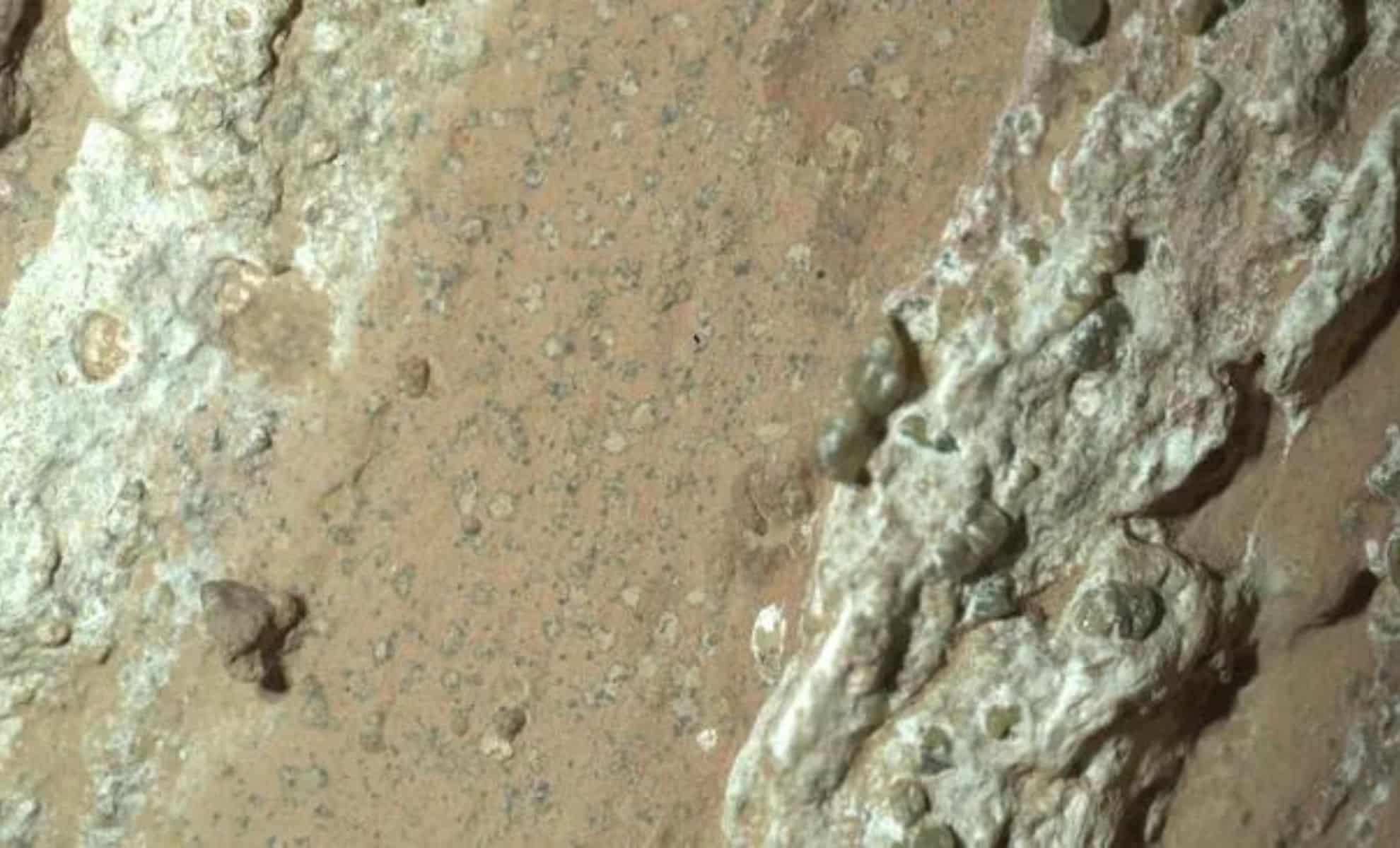NASA's Perseverance rover has made a potentially groundbreaking discovery on Mars, identifying a rock that may contain signs of ancient microbial life.
This rock, named "Cheyava Falls," features chemical compositions and structures that are consistent with those produced by microbial activity on Earth.
The discovery is particularly exciting as it could provide new insights into the history of life on Mars, if confirmed to be biological in origin. This find adds a significant piece to the puzzle in understanding the planet's geological and potentially biological past, offering a tantalizing glimpse into what may be the remnants of ancient life on the Red Planet.
The Intriguing Features of Cheyava Falls
The rock, which the rover sampled on July 21, is located at the edge of an ancient river valley in Jezero Crater, a region believed to have once contained a lake. Scientists have observed that the rock contains veins of calcium sulfate and millimeter-sized spots rich in iron and phosphate.
These features are strikingly similar to those found in microbial mats on Earth, which are colonies of microorganisms that can fossilize, preserving evidence of their presence. Katie Stack Morgan, the deputy project scientist, elaborated on the significance, stating, "This is the kind of feature if found on Earth, life would probably be involved with it. At the same time, these are chemical reactions that don’t require life."
The presence of organic molecules within the rock compounds the intrigue, as these molecules are essential components for life as we know it. While organic molecules can be formed through abiotic processes, their discovery in conjunction with these specific rock features strengthens the case for past habitability.
The detailed analysis of these organic compounds and their associations with other minerals in the rock could provide critical clues about the environmental conditions of early Mars.
The Importance of Mars Sample Return
The findings from Cheyava Falls underscore the critical importance of the Mars Sample Return mission, which aims to bring Martian soil and rock samples back to Earth for comprehensive analysis. While the Perseverance rover is equipped with advanced instruments for on-site analysis, it lacks the capability to definitively ascertain the biological origins of the observed features.

The sample return mission involves a complex series of steps, including the collection of samples by Perseverance, their storage in secure containers, and their eventual launch into Martian orbit. These samples will then be captured by a spacecraft provided by the European Space Agency and returned to Earth. However, the mission faces significant budgetary and logistical challenges, with costs projected to rise from an initial $4 billion to nearly $11 billion.
Despite these challenges, the mission is considered vital for the detailed study of Martian geology and potential biosignatures. "We cannot say right now that we have discovered life on Mars," Stack Morgan emphasized, highlighting the preliminary nature of the findings and the need for further analysis on Earth. The ability to study these samples with sophisticated laboratory equipment could potentially confirm the existence of ancient life on Mars, offering a historic breakthrough in our understanding of life's distribution in the universe.
Potential Implications for the Search for Life
The discovery at Cheyava Falls represents a significant development in the ongoing search for life on Mars. While scientists remain cautious, emphasizing that the features observed could result from non-biological processes, the find is nonetheless one of the most promising indications yet of ancient life on Mars.
Andrew Steele, an astrobiologist at the Carnegie Institution for Science, commented on the rock's potential, noting its "very interesting chemistry with the iron and phosphate concentrations" and the evidence of "aqueous activity." He added, "It’s a great place for habitability," underscoring the rock's potential as a site that once supported life.
The implications of these findings are profound, as they could reshape our understanding of the conditions necessary for life and the potential for life beyond Earth.
If confirmed, the discovery of ancient life on Mars would suggest that life can emerge under a broader range of conditions than previously thought, increasing the likelihood of finding life elsewhere in the solar system and beyond. The results could also guide future exploration missions, particularly those targeting subsurface environments where life might still exist today.




